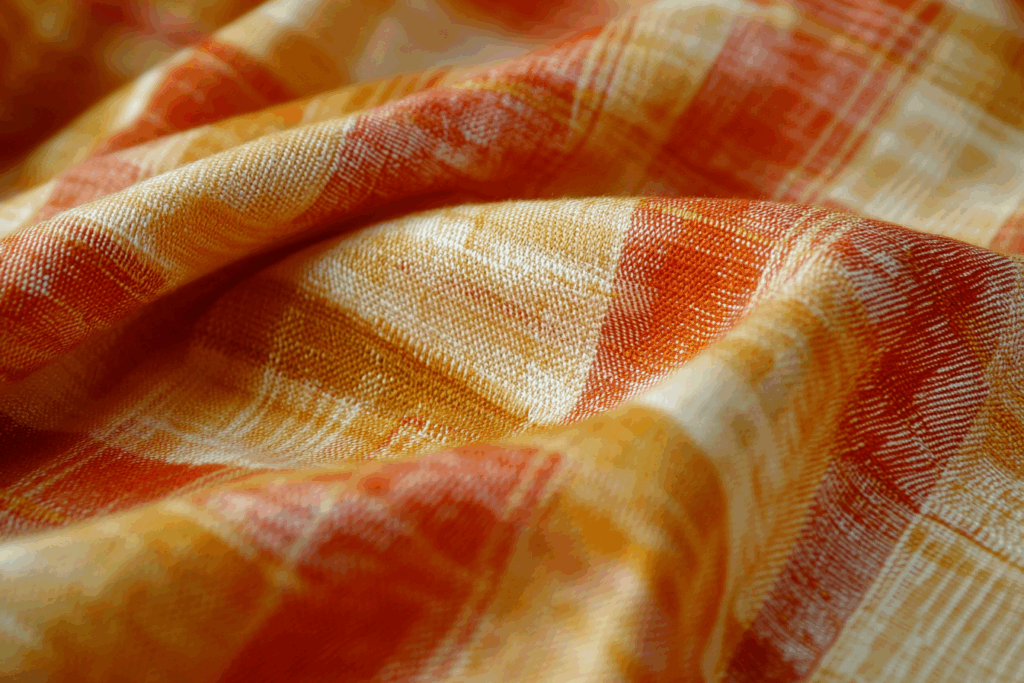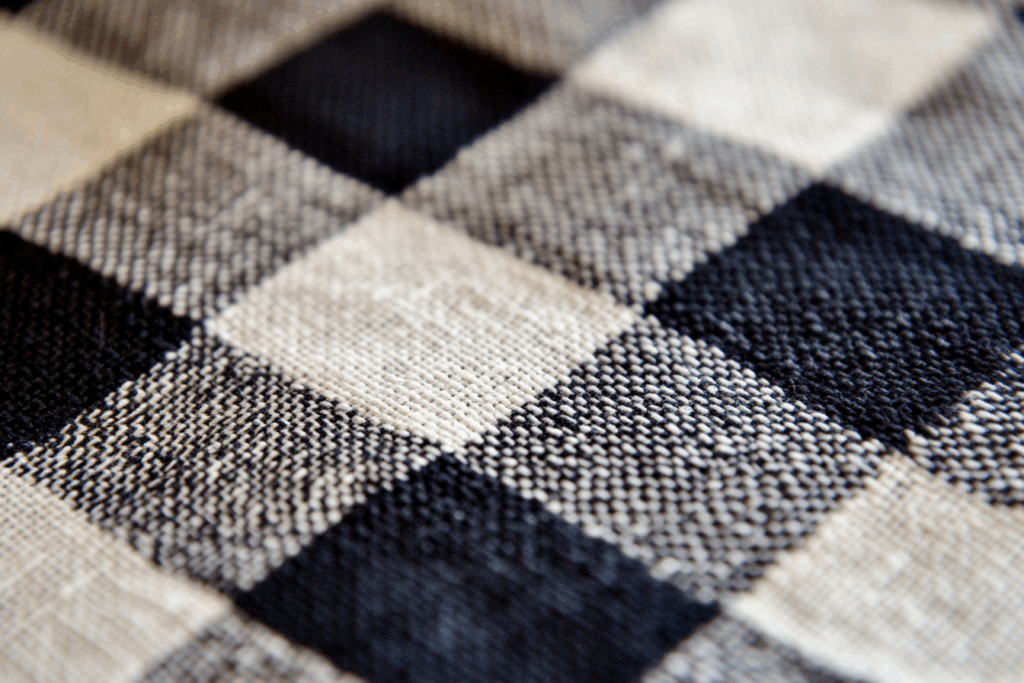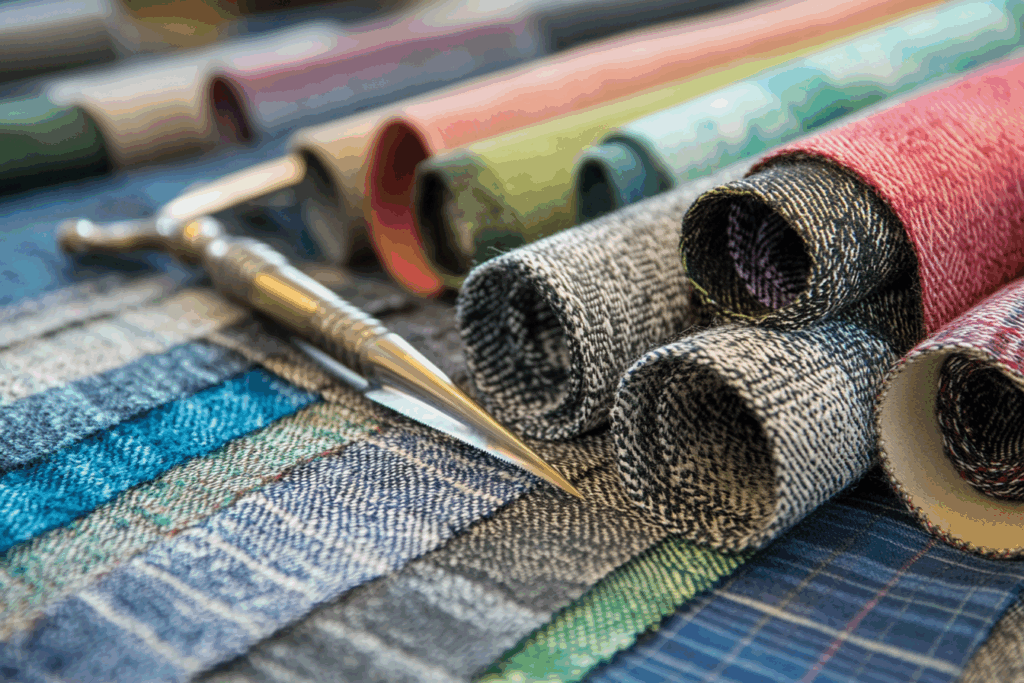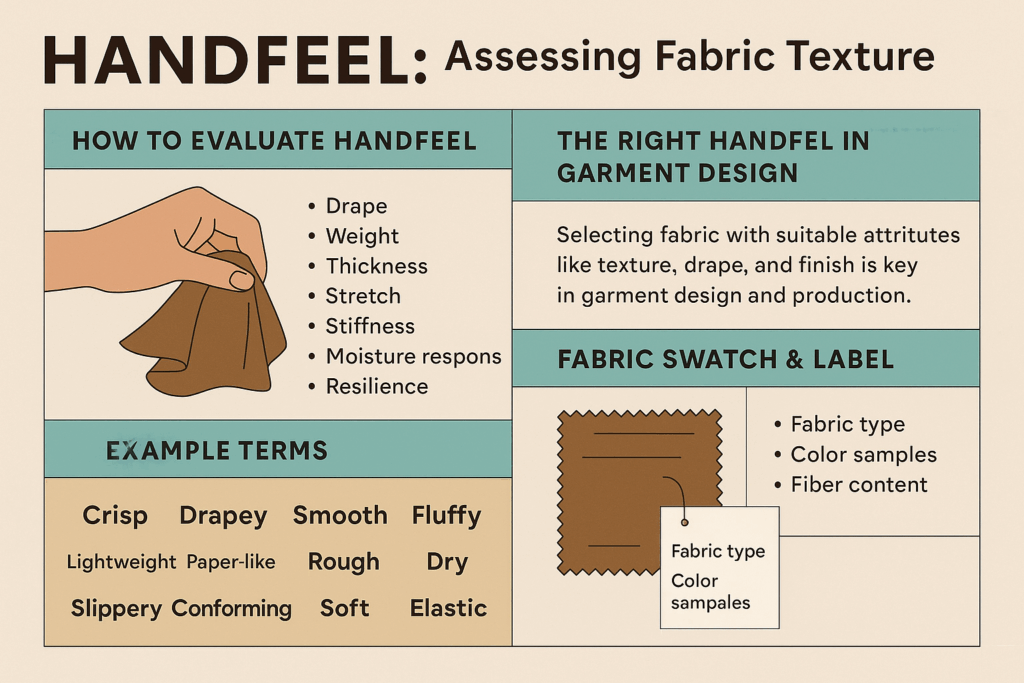Plain Weave Fabric: Structure, Variations & Garment Applications
🧵 What Is Plain Weave?
Plain weave, also known as tabby weave or taffeta weave, is the simplest and most common type of woven fabric. It is created by interlacing warp and weft threads at right angles, forming a strong, balanced structure that resembles a checkerboard pattern.
In plain weave construction:
- Each weft thread passes over one warp thread, then under the next, alternating across the width of the fabric
- The next weft thread starts the reverse, continuing the pattern
📌 This interlacing creates a dense and durable fabric with a firm, flat surface.
🔍 Structural Characteristics of Plain Weave
| Feature | Description |
|---|---|
| Interlace ratio | 1 warp over 1 weft (basic tabby structure) |
| Texture | Firm, flat, and slightly stiff |
| Drape | Less fluid compared to twill or satin weaves |
| Wrinkle tendency | High—plain weaves wrinkle easily and require ironing |
| Edge behavior | Less prone to unraveling compared to other weaves |
| Applications | Everyday wear, home textiles, embroidery bases |


📊 Yarn Count & Texture Variations
Plain weave fabric properties can vary greatly depending on yarn count (thickness and density of the threads):
📌 Figure 7a vs. Figure 7b:
- Both have equal warp and weft yarn counts
- Figure 7a: Thicker yarns → fabric is stiffer, heavier
- Figure 7b: Finer yarns → fabric is lighter, softer
Ribbed Weave (Figure C):
- A plain weave variant with thicker weft yarns
- Creates a ribbed texture across the width
- Found in fabrics like poplin and broadcloth
🎯 Adjusting yarn size in warp or weft changes weight, texture, and finish of the fabric significantly.
📎 Common Plain Weave Fabrics
| Fabric Name | Description |
|---|---|
| Poplin | Ribbed plain weave with heavier weft yarns |
| Broadcloth | Fine, closely woven plain weave |
| Muslin | Lightweight, breathable plain cotton |
| Georgette | Sheer and crinkled, often used in blouses and dresses |
| Cambric | Lightweight and smooth, ideal for shirts and dresses |
| Camel hair fabric | Thick plain weave made from camel hair, used in coats |
🧵 Plain Weave in Garment Production
Plain weave is extremely versatile. It is used for:
- Shirts and blouses
- Linings and interfacing
- Home textiles like sheets and pillowcases
- Jackets and coats when made with heavier yarns
- Printed textiles and embroidery bases due to the smooth, even surface
🎨 Design Variations
- Fancy yarns (e.g., tweed, knotted, or metallic) can be used to give plain weave fabrics more visual interest
- Square plain weave: A variation where 2 warp yarns interlace with 2 weft yarns (used in carpets or mats)
- Prints and Embroidery: Due to its stability and smoothness, plain weave is ideal for surface decoration and digital printing
📐 Weave structure is denoted as warp count × weft count (e.g., 4×4)
📌 Summary
Plain weave fabrics form the foundation of textile production, offering a stable structure suitable for a wide range of garment types. While simple in construction, the performance and aesthetic of plain weave can vary greatly based on yarn count, texture, and finishes. Its adaptability makes it perfect for everyday fashion, luxury tailoring, and decorative textiles alike.



